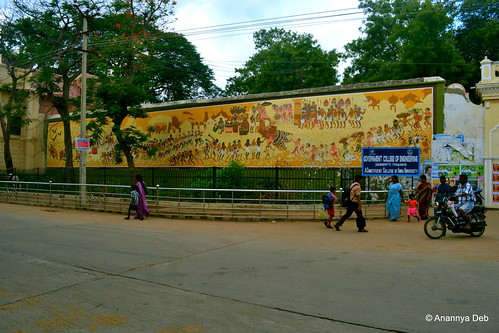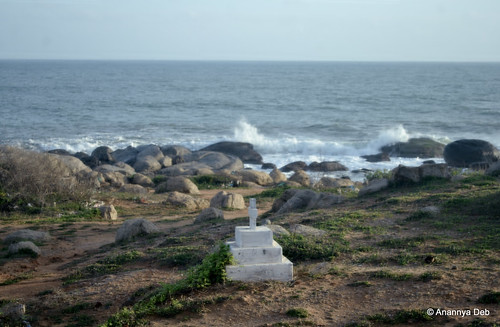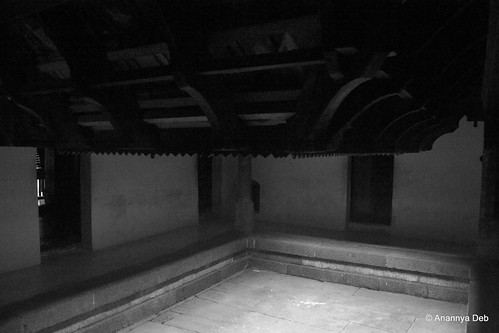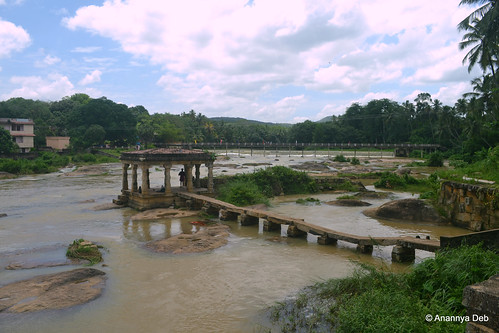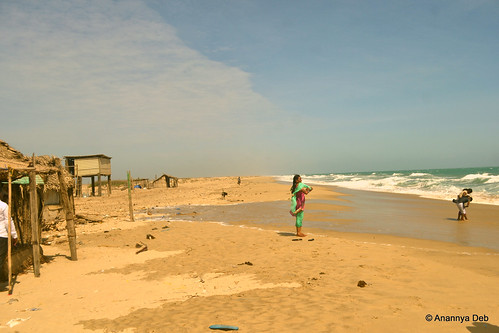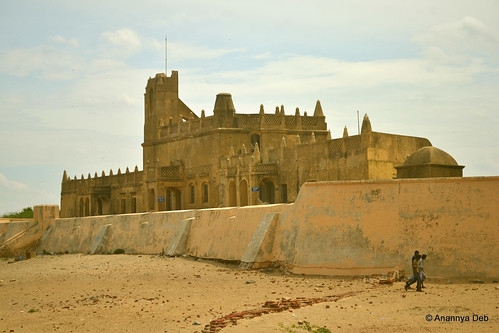Since my 15 day trip in the southern state, I have been posting in various places random bits, mostly photographs, from the trip. Here is a full compendium of material from the trip.
The Trip in Brief
I have charted my itinerary on Google My Maps and it will give you an idea of the route I took. I traveled by state transport bus – the Ultra Deluxe and Deluxe variety run by SETC and TNSTC. Just two of the journeys were by train – Thanjavur to Tirunelveli, an overnighter on the Trichendur Express and Kanyakumari to Rameshwaram, another overnighter which turned out to be 4 hours late in arrival. I stayed in hotels near the bus stands with hotel rates varying from Rs. 400 to Rs 1800. I did opt for A/C rooms at a few places given the intense heat in August but found reasonably priced hotels in the range of Rs 1000 – Rs 1200 for a single occupancy A/C room.
Traveling around the state was a very pleasant experience but for the heat and the lack of non-Tamil signage in the bus stands.
Highlights (blogged on my Tumblr photo blog)
Sunset in the paddy fields – returning from Pichavaram to Chidambaram town, as the bus halts to pick up passengers, the paddy fields go through the motions of yet another sunset.
The Sisyphus-like task of maintaining heritage – at the Thanjavur palace, a thunderstorm led to the collapse of one wing of the Mahal. Conservation is still a work in progress.
A window framed by the ambient light – at the Gandhi Mandapam in Rameshwaram
Howdy from the Howdah – the window seat of the Maharajah of Travancore at Padmanabhapuram Palace
A contrast in aesthetic quality of structures, separated by the width of a river and a few hundred years – at the Thiruparappu weir / waterfall on the Kerala – TN border
Unknown memorials to the sea – a rudimentary structure of stones or concrete blocks with a small piece of metal on top, resembling a Christmas tree, a tombstone and / or a church steeple found in Dhanushkodi.
Anti-vandalism movement in Madurai – an effort by the archaeology department that, unintentionally, vandalised more than it reduced.
Historical Analysis
In this trip I have ticked off all the UNESCO World Heritage Sites in South India, at least the structural types. There is still the Nilgiri Mountain Railway to take as is some of the deeper reaches of the Western Ghats. The last of the structural kind to be ticked off the list were the Great Living Chola Temples. Watching the three monumental structures, I penned together some amateur historian field notes here, mostly about how the relationship between ego and the colossal size of the structures.
Photo Albums
Chidambaram: A town as old as time – when you read more legends about a town than there are people living there, you just simply forget about figuring out its history.
Thanjavur: A historic city, significant in its influence in the area of art and till today the centre of many exquisite forms of artisanal craft.
The Great Living Chola Temples: The big temple of Thanjavur overlords the other two but each one of them pwns most structures in India including some of the Mughal ones.
Kanyakumari – I didn’t like Kanyakumari one bit, apart from view of the bay, the sea and the ocean merging together and the general feeling of awe when standing at the southernmost point of India
Padmanabhapuram: When Marthanda Varma consolidated his territory and formed the state of Travancore, he located his capital in this town of Padmanabhapuram, named after the ruling deity of the family. A palace built of wood remains to the day but the town has now become a village serving the occasional tourists
Thiruparappu: Thiruparappu is an ancient town on the river Kothayar, about 20km north west of Padmanabhapuram. It is nestled in the southernmost of the Western Ghats along the TN-Kerala border. On one side of the river is an ancient Shiva temple with stone gateways leading to the river. Towards the north is a weir controlling the waterflow and directing it to a fairly decent and powerful waterfall.
Dhanushkodi and Rameshwaram: The two, just 20 kilometres apart, represent two opposite ends of the survival index. Dhanushkodi is a ghost town, destroyed by the cyclone in 1967. Rameshwaram smaller than a Mumbai suburb is bustling with fishing activity along with the regular surge of pilgrims to the temple.
Madurai: A historic town, the heart centre of Tamil Nadu, Madurai is both a modern city with its cafes, neon lit stores, stylish people and so on as well as a culturally orthodox city with its temples, body stained religious devotees and the smell of burnt ghee from the sacrificial fires all over the town.
Tranquebar: Tranquebar, the former Danish colony, is called Tharangambadi, the land of musical waves and is preserved as a heritage town. The whitewashed buildings, mostly churches and schools still in use, make it quite attractive to look at. It is a very small town and in 20 minutes, you would have walked round it almost twice.
Got any questions? Do ask.

